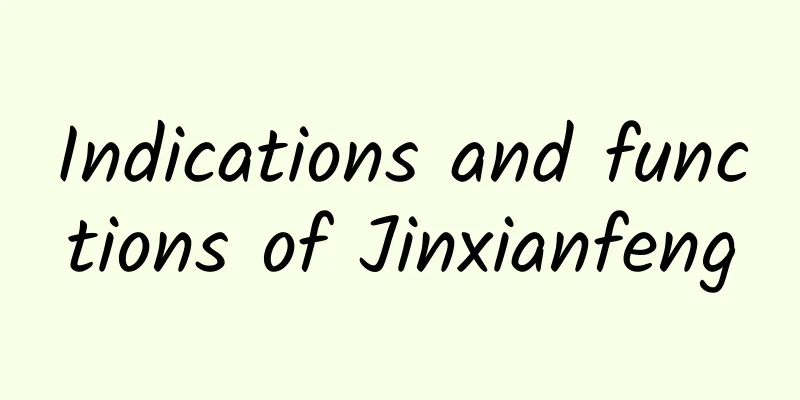The efficacy and function of Anhui Phellodendron chinense

|
The efficacy and function of the traditional Chinese medicine Anhui Phellodendron chinense are very great. We can often see Anhui Phellodendron chinense in our lives. Utilizing the medicinal properties and therapeutic properties of Anhui Phellodendron chinense will bring us many unexpected benefits in health care. Let's take a look at the traditional Chinese medicine Anhui Phellodendron chinense. 【English name】 root of Anhwei Barberry [Other names] Phellodendron chinense, Phellodendron thorny, three needles [Source] Medicinal material source: The stems and branches of Berberis serrata, a plant of the Berberidaceae family. [Original form] Phellodendron chinense, a deciduous shrub, 1-2m tall. The twigs are slightly angular, the old branches are yellow or dark brown with a few black warts, and the thorns are solitary or trifurcated, 1.5-3cm long. Leaves are clustered; petiole 0.5-1cm long; leaf blade elliptical, obovate-thrifty to ovate-elliptical, 2-6cm long, 1.5-3.5cm wide, blunt at the apex, cuneate at the base, with 15-25 spiny serrations on the edge, 2-3mm pitch, green above, grayish white below, with obvious reticular veins. The raceme is terminal, 3-4cm long, with 10-20 flowers; the flowers are yellow, about 1cm in diameter, with 6 perianths, 2 glands at the base of the inner petals; 6 stamens, 2-lobed anthers; 1 ovary, containing 1-2 ovules. The berries are oval, red and slightly powdery. The flowering period is from April to July, and the fruiting period is from August to October. [Habitat distribution] Ecological environment: Grown in mountain thickets, stream banks or rock crevices under forests at an altitude of 400m. [Properties] Identification of properties: the stems and branches are cylindrical, slightly straight, multi-branched, 1-5mm in diameter, and of varying lengths. The surface is dark brown or brownish black with longitudinal wrinkles. The punctures are mostly single and rarely trifurcated. It is hard, easy to break, and the broken surface is fibrous; the cross-section of the bark is light yellow, the wood is yellow, with dense radial texture, the pith is smaller and yellowish-white. It has a faint smell and a bitter taste. 【Nature and flavor】 Bitter; cold 【Meridian】 Liver; stomach; large intestine 【Functions and indications】 Clears away heat and dampness; purges fire and detoxifies. It is used for damp-heat dysentery, diarrhea, jaundice, stranguria, leucorrhea, sores, sore throat, red and swollen eyes. [Usage and Dosage] For oral use: decoction, 10-15g. For external use: take appropriate amount and decoct in water for fumigation and washing. 【Excerpt】 Chinese Materia Medica Everyone should know about the medicinal value of Anhui Phellodendron chinense. We should pay more attention to information in this area so that we can be prepared when encountering problems and avoid panic. |
<<: The efficacy and function of black whistling chicken
>>: The efficacy and function of Angtianlian
Recommend
The efficacy and function of vesicle grass
Many people are very familiar with bubble grass. ...
Uncover the magic behind the browser: the entire process from URL input to page display
In the digital age, browsers have become our gate...
If you don’t want your bones to become more and more brittle, you must eat less of these foods!
This article was reviewed by: Xie Xinhui, Jixi Ji...
The efficacy and function of seven leaf gall
We know that there are many kinds of Chinese medi...
The effect of rose and wolfberry
Rose is a flower that is deeply loved by girls. R...
What are the benefits of drinking Ophiopogon japonicus in water?
The utilization rate of traditional Chinese medic...
He fell in love with math puzzles because of the tangram, and now he has solved a century-old problem
At the end of May this year, a Finn who fell in l...
New evidence of extraterrestrial life was discovered on this planet!
A team led by scientists from the Southwest Resea...
The efficacy and function of burr fruit vine
I don’t know if you are familiar with the prickly...
Gelsemium elegans
We all know that Gastrodia elata is a Chinese her...
What are the contraindications of drinking detoxifying Chinese medicine?
Detoxification and beauty care are what each of u...
The efficacy and function of hibiscus leaves
With the development of society and the close int...
Magical things born from simplicity: Uncovering the origin of bioelectricity
Produced by: Science Popularization China Author:...
Be careful! A poison that can kill you with just 1 mg may be in your kitchen!
Fermented foods are loved by people for their uni...
The efficacy and function of tacai
Tacai is a medicinal material frequently used in ...









